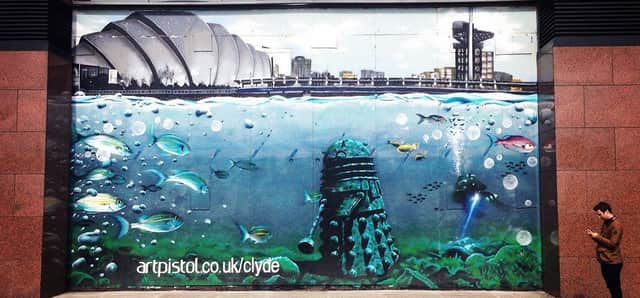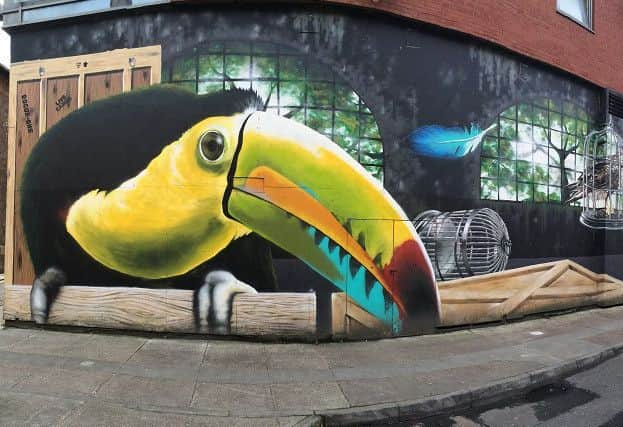Following the Glasgow Mural Trail


Glasgow has wholeheartedly embraced and encouraged its local street artists. Last year Glasgow City Council officially set up the Glasgow Mural Trail, mapping fourteen different pieces of large scale, original street art at various locations across the city, some of which have been around since 2008.
The number of murals on the trail has now grown to eighteen, although sadly the temporary nature of the pieces - which for the most part are sprayed onto the side of vacant Glasgow buildings - means that preservation of the Mural Trail isn’t guaranteed. The upside here is that the project is far more flexible than a conventional art exhibition and, with no confines to speak of, has the potential to develop and grow indefinitely.
Advertisement
Hide AdAdvertisement
Hide AdArtistic styles on the Glasgow Mural Trail range from hyper-realistic to the more abstract, with many of the designs incorporating bright colours. Visitors, residents and local businesses have all expressed a fondness for the murals, many of which have breathed a new, vivid lease of life into abandoned areas of the city. While all of the pieces are striking in their own way, two notable installations bursting with colour include Recoat and Ali Wyllie’s ‘Space Man’ on New Wynd, and Rogue-One’s ‘World’s Most Economical Taxi’ on Mitchell Street.


Other installations on the trail celebrate Glasgow’s rich history, like the ‘Strathclyde University’ mural on George Street by Art Pistol, Rogue-One and Ejek. Designed by the same trio, ‘Clutha’, on Stockwell Street, is a poignant reminder of resilience in the face of tragedy. The Mural Trail project has fostered collaborations between individuals in what is historically a solitary medium. Contributors have even been encouraged to build on some of their existing work, with creator Smug re-visiting his ‘Argyle Street Cafe’ to add some wild customers into his more peaceful original.
Animals feature heavily on the trail, from Rogue-One and Art Pistol’s tongue-in-cheek ‘Big Birds’ on the corner of Howard Street and Dunlop Street, to Klingatron’s ‘Glasgow’s Panda’, on the once much-less picturesque Gordon Lane.
The official Glasgow Mural Trail map (available both online and in hard copy) not only guides visitors to all eighteen installations, but also suggests nearby landmarks that might be of interest. Far from being defacements, these graffiti murals have enhanced Glasgow both visually and culturally, adding an exciting new element to the city’s art scene that - with any luck - will be nurtured and remembered for years to come.